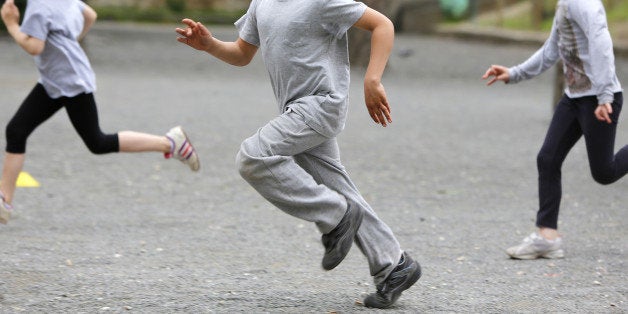
While scrolling through my timeline on Facebook last week, I came across a post about a child who had been put on a "cleanse" to lose weight. I cannot tell you how that made my blood boil!! That poor child! It's hard enough to be an overweight child when all you want to be as an adolescent is the same as everyone else. Not to mention the shame that goes along with being put on an extreme diet of protein shakes and "snack" bars. How do you explain to your friends that you are having a protein shake for lunch while they enjoy a turkey sandwich on whole wheat bread or Greek yogurt with berries? Even children who are diagnosed as obese are not put on a "diet" by health professionals, let alone a cleanse. The Academy of Nutrition and Dietetics recommends that children who are classified as overweight or obese maintain their current weight and only attempt to lose weight through calorie restriction if other risk factors for disease are present. If that is the case, then a healthy and appropriate diet is prescribed by a Registered Dietitian. It is imperative that all children eat nutrient-dense foods each day. Cleanses, even the best of them, do not contain the appropriate nutrients needed for a growing child. If your child has been diagnosed as overweight or obese by a licensed physician, you may ask to be referred to a Registered Dietitian for guidance. But in the meantime, here are some helpful tips for helping an overweight or obese child reach a healthy body weight.
1. Exercise is key.
The best way to have a child reach their healthy body weight (as determined by a Medical Doctor (MD) or Registered Dietitian (RD)) is through physical activity. That's right, no extreme calorie restriction needed. Kids are lucky; they grow up, literally. Stabilizing weight gain while burning excess body fat is the goal while they grow. A healthy dose of exercise for 60 minutes on most days will help them build strong bones and muscles, while burning that excess fat. Not sure where to start? Try going for brisk walks, playing a game a soccer or taking a bike ride through a local park. The more fun the workout, the greater the chances are that your child will have fun and want to do it again. Over time, a healthy, lifelong habit of exercise will develop and that's good for people at any age.
2. Serve "American-style" at meals.
Did you know that plating food in the kitchen and serving that pre-portioned plate at the table is called "American" style? "Family" style is when you serve meals from large platters that are placed on the dining table. Pre-plating a child's meal (and an adult's, for that matter) reduces the urge for second helpings and the extra calories that come along with it. Try pre-plating your family's meals in the kitchen and bring only those plates to the table. Hungry for seconds? OK, bring a salad or cut-up raw vegetables to the table to pick at. Chances are, no one will need another helping of the main course.
3. Reduce temptation.
Rarely does it happen that the children do the food shopping for a household. As the parent, it is your responsibility to teach them how to choose healthy snacks. By purchasing appropriate snacks and refusing to purchase the highly processed, calorically-dense, nutrient-deficient junk, the likelihood of a child eating a sleeve of cookies or a bag of fried chips is reduced. Believe it or not, most kids will go for the "easy grab," so leave out a bowl of fruit where they can see it and reach it, or keep one-portion bags of popcorn or pretzels in the pantry for a crunchy treat.
4. Involve them in meal planning.
Kids tend to eat what they have a hand in preparing. Find out what they like to eat, and together you can search for a recipe that is low in fat, sugar and refined grains and high in fiber and nutrients. Then have them help with the cooking! Working together with measuring cups and spoons is a great time to teach about portion sizes. There are some helpful visuals available to remind you of appropriate portion sizes. Here is a list to guide you and your kids to eat the right amount of food.
5. Just say "No!" to diets and cleanses for children.
When you teach children how to eat right by cooking from scratch, snacking on minimally processed foods and serving appropriate portions, they learn how to eat as a way of life and not as a quick-fix to a weight problem. Even if they are classified as overweight or obese, there is no need to put a child on a diet. Children need nutrients to grow properly. Unless there are food allergies, all food groups should be included in their daily eating plan to get all of the essential nutrients during this crucial period of growth. Diets and cleanses will not provide all that a child needs; real food will.
Obesity is no joke; it is an independent risk factor for heart diseases and diabetes -- diseases that are epidemics in our country. These tips are not only useful for children to avoid these diseases, but for adults as well. Learning how to eat real food in the amount your body needs to maintain its weight for optimal health can benefit people at any age. A Registered Dietitian can help you and your family reduce your risk of obesity. The right way.